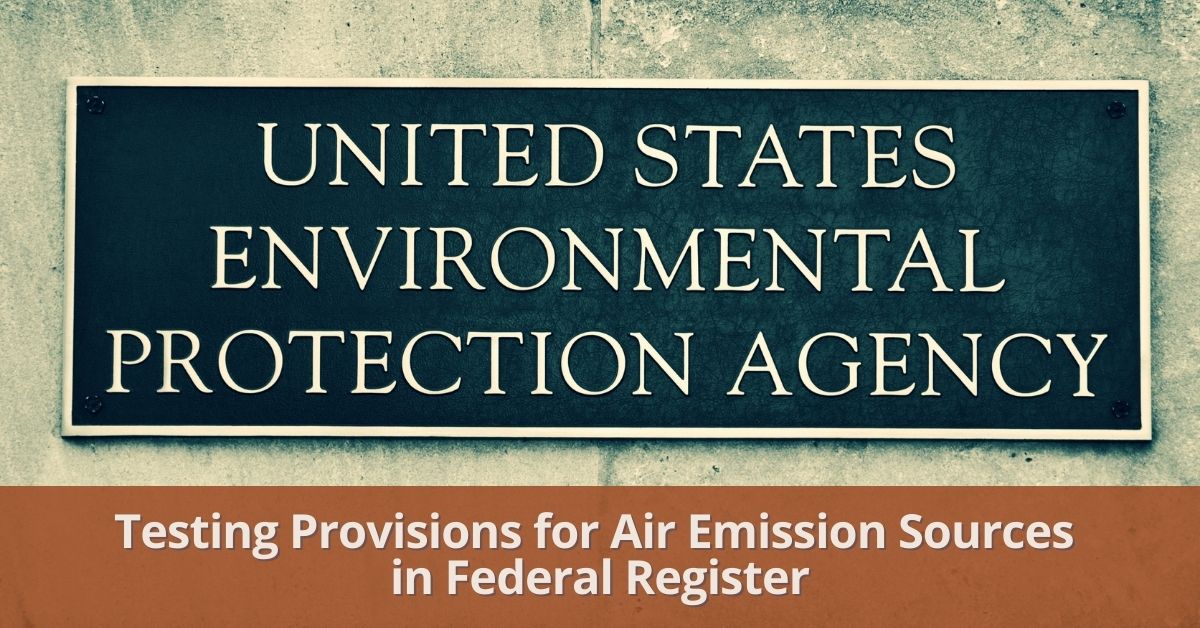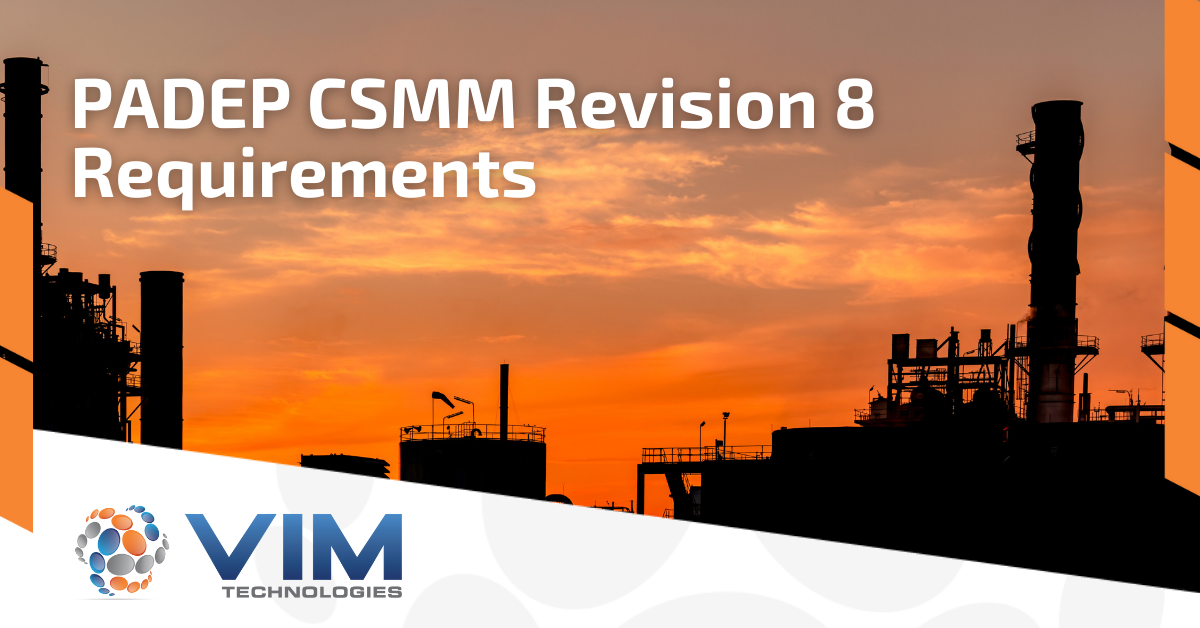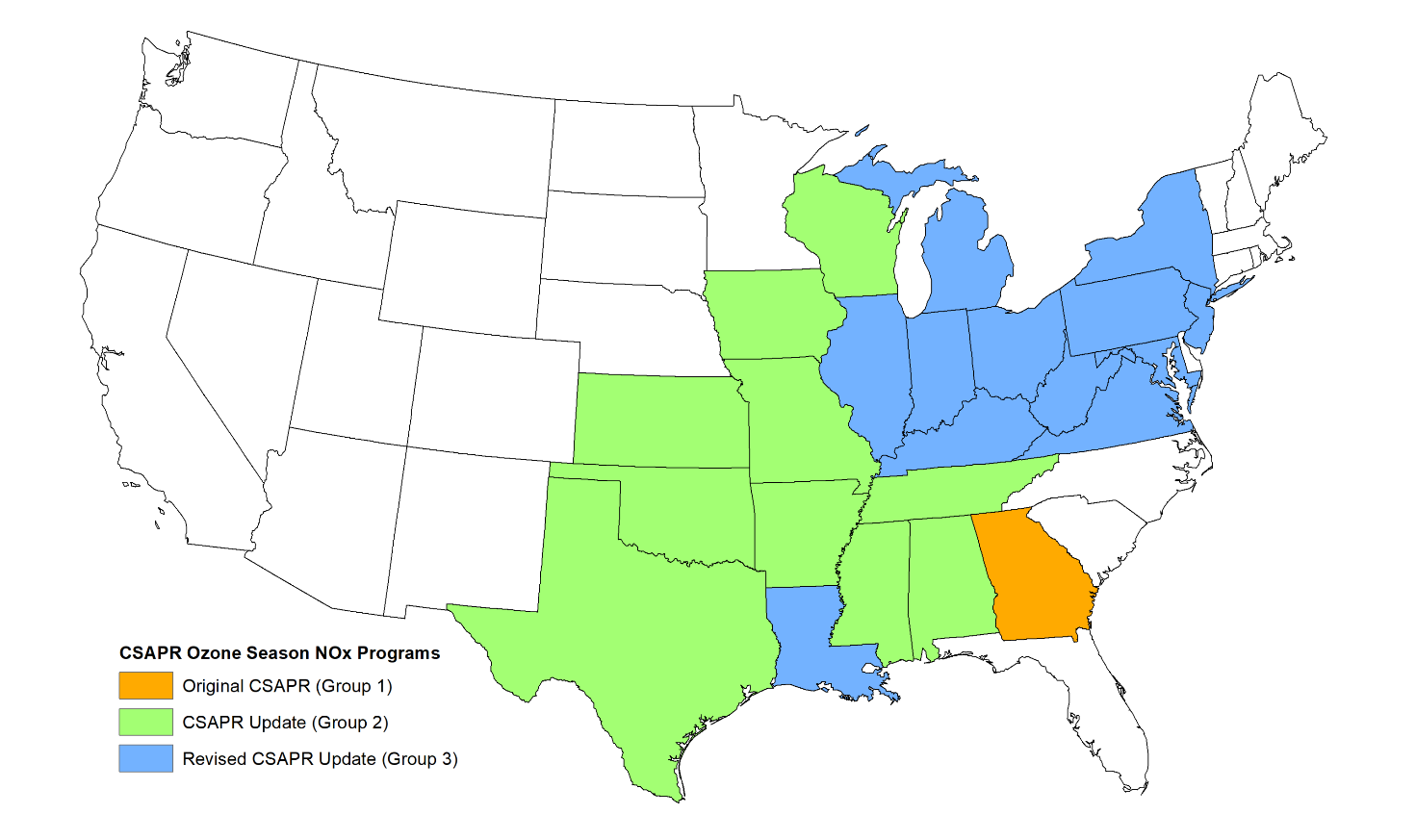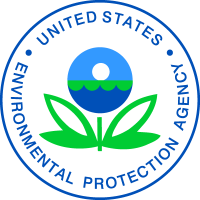On April 26, 2022, EPA published the proposed Testing Provisions for Air Emission Sources in the Federal Register. The proposed regulation includes corrections to inaccurate testing provisions, revisions to outdated test procedures as well as approved Read more »
Category: Compliance Related Resources
PADEP CSMM Revision 8 Requirements
Pennsylvania Department of Environmental Protection (PADEP)
The Environmental Quality Board (EQB) is moving forward on the Reasonably Available Control Technology (RACT) III rule that was proposed to the Pennsylvania Department of Environmental Protection (PADEP) on October 17, 2019. The purpose of this rule was to revise the State Implementation Plan (SIP) for compliance with the primary and secondary National Ambient Air Quality Standard (NAAQS) for ozone. RACT applies to major sources of nitrogen oxides (NOx) and/or volatile organic compounds (VOCs) emitted statewide. This revision to the rule will provide additionally reduced emissions limits for NOx and VOCs from the previous PA RACT rules. The compliance deadline for RACT III will be January 1, 2023.Read more »
Are You Ready to Comply with the New PCWP MACT Requirements?
On June 8, 2020, the U.S. Environmental Protection Agency (EPA) finalized amendments to the 2004 National Emission Standards for Hazardous Air Pollutants (NESHAP) for Plywood and Composite Wood Products (PCWP).
The EPA then published the final residual risk and technology review (RTR) conducted for the PCWP on August 13, 2020. The EPA determined that PCWP facility air emissions risk is acceptable and that the NESHAP standards continue to provide an ample margin of safety to protect public health. However, the EPA made several revisions and clarifications to the PCWP NESHAP requirements to enhance the rule’s effectiveness by improving compliance and implementation and increasing the efficiency of data submissions.Read more »
Are You Ready for the 2021 Alberta CEMS Code Update?
UPDATE: AEP Issues June 18, 2021 Memo
On June 18, 2021, AEP released a memorandum which states that previous authorizations to deviate from the 1998 CEMS Code apply specifically to the 1998 Code. Affected sources should work with their approval coordinator to have any such deviation(s) authorized prior to January 1, 2022. The installation requirements specified in the 2021 CEM Code apply to new installations, “therefore existing authorizations to deviate which are based on physical installation requirements (i.e., sampling location) may remain.”Read more »
EPA Publishes Final CSAPR Group 3 Rule In The Federal Register
On April 30, 2021, just one day prior to the 2021 ozone season, EPA published the final 40 CFR Part 97, Subpart GGGGG, CSAPR NOx Ozone Season Group 3 Trading Program in the Federal Register. The CSAPR Group 3 rule requires additional NOx reductions from power plants located in twelve (12) states beginning with the 2021 ozone season. The twelve (12) affected States are Illinois, Indiana, Kentucky, Louisiana, Maryland, Michigan, New Jersey, New York, Ohio, Pennsylvania, Virginia and West Virginia. The new Group 3 Trading Program is in addition to the existing Groups 1 and 2 NOx Ozone Trading Programs. The rulemaking also includes minor technical/administrative changes to the other CSAPR subparts.
Subpart GGGGG defines distinct Group 3 NOx ozone season State budgets for 2021, 2022, 2023 and “2024 and Beyond.” In general, one sees a reduction in the State budgets each year until the State budgets become fixed for the 2024 and Beyond ozone seasons. For example, reference the Group 3 State Budgets for the 2021 ozone season compared to the State budgets for 2024 and Beyond, as listed in the rule [FR-Vol. 86-No. 82, pages 23123-23124].
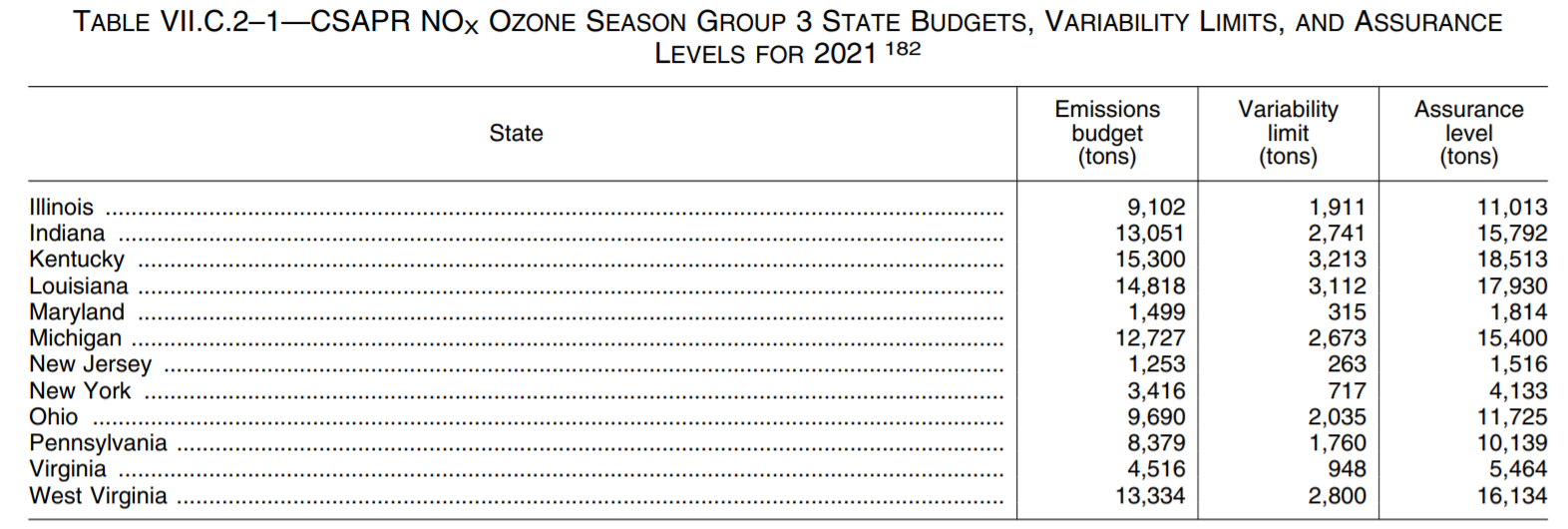
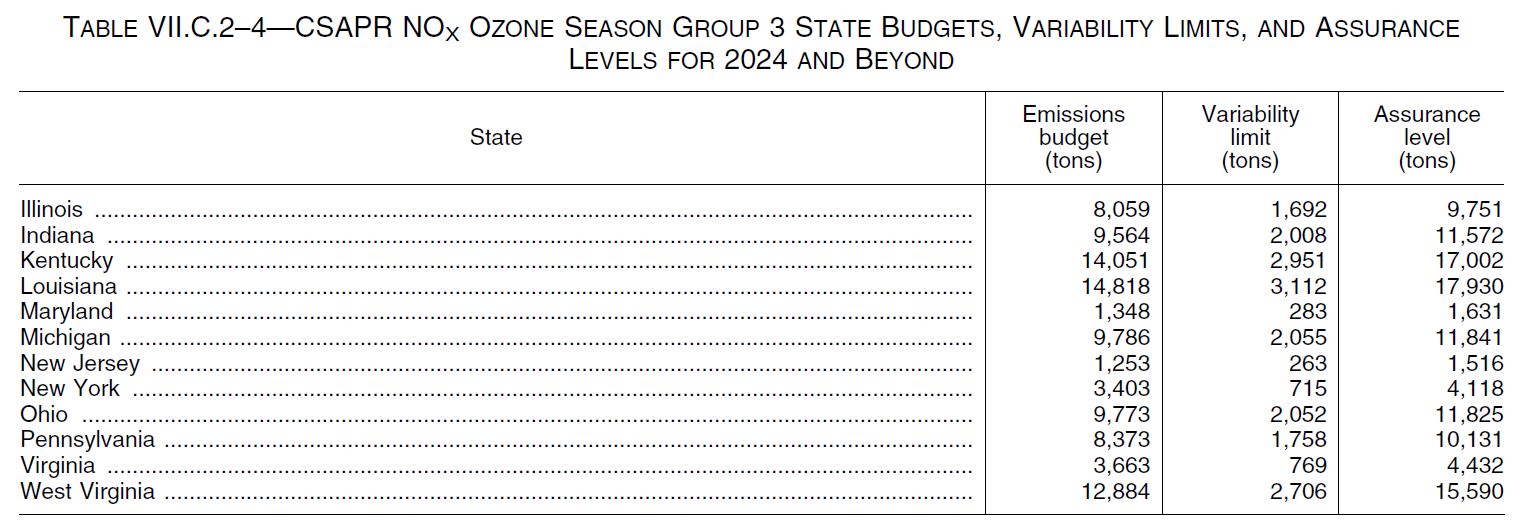
EPA also finalized Federal Implementation Implementation Plans (FIPs) for 22 states to address interstate transport of ozone pollution under the Clean Air Act’s “good neighbor” provisions. The final rule becomes effective on June 29, 2021. A copy of the Federal Register publication is available here.
EPA Administrator Signs Final Cross-State Air Pollution Rule Update
On March 15, 2021, the EPA Administrator signed the final revisions to 40 CFR Part 97, Subpart GGGGG, CSAPR NOx Ozone Season Group 3 Trading Program. Subpart GGGGG requires additional NOx reductions from power plants located in twelve (12) states beginning with the 2021 ozone season. The twelve (12) affected States are Illinois, Indiana, Kentucky, Louisiana, Maryland, Michigan, New Jersey, New York, Ohio, Pennsylvania, Virginia and West Virginia. The new Group 3 Trading Program would be in addition to the existing Groups 1 and 2 NOx Ozone Trading Programs. The final rule does not include ozone season NOx emission limits for non-EGUs. The rule will become effective sixty (60) days after the Federal Register publication date. VIM will post a copy of the Federal Register publication when it becomes available. A copy of the prepublication version of the rule can be found here.
New Year Resolutions: 5 Tips to Improve Your Air Compliance
It’s a New Year, and one that we couldn’t be happier to see arrive. The new year is the perfect time to take stock and set goals for the year ahead. It’s time to consider New Year’s Resolutions for improving your air compliance programs. We’ve compiled our Top 5 great ideas to consider when planning for the year ahead:
1. Perform Checks on your CEMLink 6 System
Clean up unwanted files off your CEMLink 6 hard drives and check your system’s available storage space, CPU usage, and SQL Server memory usage. Exported files that are no longer needed should be removed. Be sure you have good backups of your PLC and Database files on an external device, and make sure you have a useable backup of CEMLink 6. Make sure that all alarms are acknowledged with proper reason codes and action codes and check that automatic backups are included in your scheduler and are working properly. Check PC/VM storage space. Verify your QA Test Plan/Plan ahead of this year’s CGAs/Linearities and use the Compliance Calendar to help plan for these events. As always, if you have questions or wish for VIM to help, contact VIM Support.Read more »
EPA Publishes Revisions to the Civil Monetary Penalty Inflation Adjustment Rule
On December 23, 2020, EPA published revisions to 40 CFR Part 19, Civil Monetary Penalty Inflation Adjustment Rule in the Federal Register which increased violations to the Clean Air Act from $101,439 per day per violation to $102,638 per day per violation. The rule also increases the monetary penalty for violations to the Clean Water Act from $55,800 to $56,460. This civil penalty applies to violations that occurred after November 2, 2015, where penalties are assessed on or after December 23, 2020. The rule becomes effective on December 23, 2020. A copy of the rule is available here.
EPA Publishes Amendments to NESHAP General Provisions
On November 19, 2020, EPA published finalized amendments to Subpart A, General Provisions for the National Emission Standards for Hazardous Air Pollutants (NESHAP) regulations in 40 CFR Part 63. Read more »
